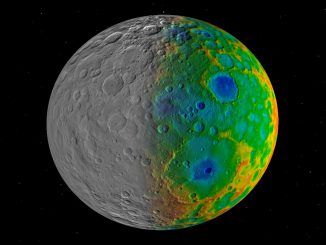
Extended tracking has allowed astronomers to pin down the orbit of a presumed dwarf planet in the extreme outer solar system that takes a thousand years to complete one trip around the Sun. Knicknamed Farfarout, the frigid body is the most distant solar system object yet detected, eclipsing the previous record holder, Farout.
Listed as 2018 AG37 by the Minor Planet Center, Farfarout is currently 132 times farther from the Sun than Earth (132 astronomical units, or AU) and nearly four times more distant than Pluto. Its highly elongated trajectory carries it inside the orbit of Neptune and as far as 175 AU from the Sun. Analysis indicates the object is about 250 miles across, putting in on the low end of the dwarf planet scale (assuming it is an icy body).
“A single orbit of Farfarout around the Sun takes a millennium,” said University of Hawaii researcher David Tholen, a member of the team that discovered the body in 2018. “Because of this long orbital period, it moves very slowly across the sky, requiring several years of observations to precisely determine its trajectory.”
Tholen, Scott Sheppard of the Carnegie Institution for Science and Chad Trujillo of Northern Arizona University lead an ongoing survey to map the outer solar system beyond Pluto. They discovered the previous record holder, Farout, which is 120 AU from the sun.
The discovery of the even more distant Farfarout demonstrates “our increasing ability to map the outer solar system and observe farther and farther towards the fringes of our solar system,” said Sheppard. “Only with the advancements in the last few years of large digital cameras on very large telescopes has it been possible to efficiently discover very distant objects like Farfarout.”
Farfarout will be given an official name after its orbit is known with greater precision. In the meantime, Sheppard described Farfarout as “just the tip of the iceberg … of objects in the very distant solar system.”



